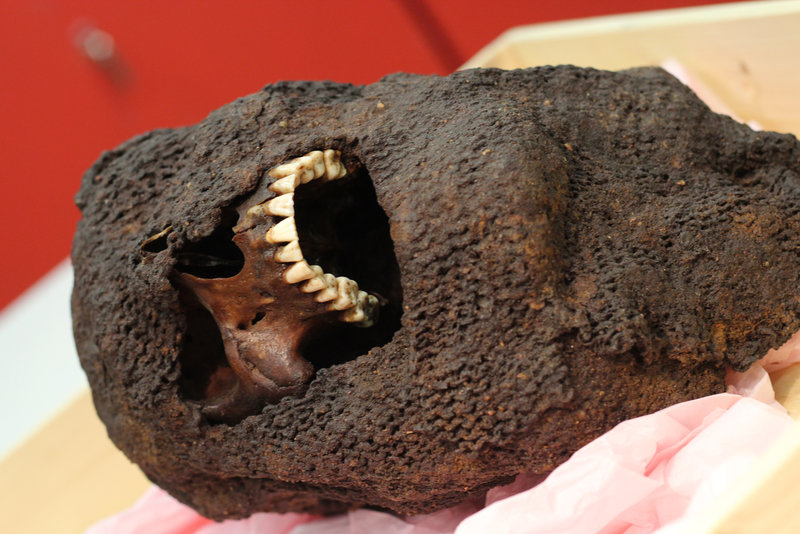Shocking Revelation: The Medieval Skull with a Necklace – Unearthing the Legacy of a Fallen Warrior from the Battle of Visby in 1361
In the annals of history, the Battle of Visby in 1361 stands out as one of the most harrowing and devastating clashes of the medieval period. Fought on the island of Gotland, Sweden, this brutal confrontation between the invading Danish forces and the local Gotlandic defenders left an indelible mark on the region’s history. The battle was not just a violent skirmish over territory; it was a catastrophic event that resulted in the tragic loss of countless lives. Among the many haunting relics unearthed from this period is a medieval skull, discovered with a necklace—a symbol of the personal sacrifice and the enduring mysteries of those who fought and died in this fateful conflict.

The skull, belonging to a soldier who met his end on that blood-soaked battlefield, offers a poignant glimpse into the life and death of a warrior of the Middle Ages. This soldier, like many others, was likely a common man drawn into the maelstrom of war, facing overwhelming odds as he defended his homeland against a more powerful adversary. The discovery of his skull, still bearing the traces of a once-proud warrior, is a sobering reminder of the harsh realities of medieval warfare. The fact that this skull was found with a necklace adds a deeply personal and emotional layer to the story—one that invites us to ponder the human side of history.
The necklace, preserved through the centuries, raises numerous questions about the life of the soldier it accompanied. Was it a talisman of protection, carried into battle in the hope that it might shield its wearer from harm? Perhaps it was a religious symbol, a token of faith that the soldier clung to in his final moments. Or could it have been a cherished gift from a loved one, a tangible reminder of home and family as he faced the horrors of war? Whatever its significance, the necklace connects us to the soldier in a way that mere bones cannot, offering a glimpse into the emotional and spiritual life of a man who lived and died over six centuries ago.

The Battle of Visby itself was a devastating affair, remembered not only for the ferocity of the combat but also for the sheer number of casualties. The Danish forces, led by King Valdemar IV, overwhelmed the defenders of Gotland with their superior numbers and military might. The defenders, many of whom were poorly equipped and untrained peasants, fought bravely but were ultimately no match for the seasoned Danish soldiers. As the battle raged on, the bodies of the fallen piled up, and the fields around Visby were littered with the dead and dying.
In the aftermath of the battle, the surviving inhabitants of Gotland were forced to bury their dead in mass graves. These graves, which have since been uncovered by archaeologists, contain the remains of over 1,800 individuals—grim evidence of the scale of the slaughter. The soldier whose skull and necklace were discovered was likely among those hastily interred in these mass burials, his armor still clinging to his bones as he was laid to rest with his fallen comrades. The armor, now rusted and decayed, is a stark reminder of the soldier’s final moments, of the desperate fight for survival that ultimately ended in his death.

The discovery of this skull and necklace is more than just an archaeological find; it is a powerful testament to the human cost of war. It reminds us that behind every battle, every conflict, there are individual lives—men and women who lived, loved, and ultimately sacrificed everything for their beliefs, their homes, and their families. The soldier whose remains were uncovered at Visby may have been one of many, but his story, as told through the relics he left behind, resonates across the centuries.
As we reflect on the Battle of Visby and the tragic fate of those who fought and died there, we are reminded of the enduring impact of history. The skull and necklace, relics of a time long past, connect us to a world that was both distant and yet profoundly human. They offer a window into the life of a soldier who, like so many others, was caught in the tides of history—swept up in a conflict that would shape the course of his life and, ultimately, seal his fate. This discovery, while haunting, is also a tribute to the resilience and courage of those who came before us, and a reminder of the sacrifices made in the name of survival and honor.


